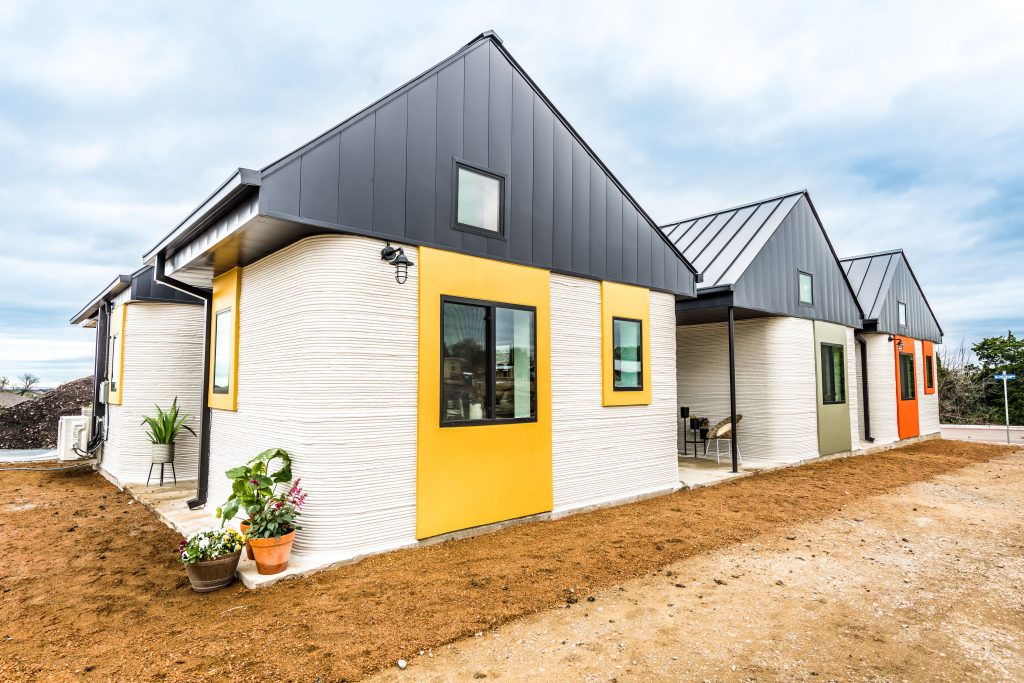Engineers at RMIT University and the Hebei University of Technology have come up with a novel approach to optimizing the topology of concrete 3D printed builds.
A new take on Bi-directional Evolutionary Structural Optimization or ‘BESO,’ the team’s process is said to enable the creation of unique self-supporting models, which can then be realized via continuous extrusion. With further R&D, the researchers say their method could allow construction 3D printer users to overcome some of the limitations preventing them from maximizing the technology’s benefits.
“The integration between concrete 3D printing (3DCP) and topology optimization enables the fabrication of structurally-efficient components without expensive formwork and intensive labor,” say the team in their paper. “However, the manufacturing constraints of 3DCP are impeding the integration between the two fields. In our paper, we address various manufacturing constraints of 3DCP within the BESO framework.”

Opening up topology optimization
Generally, the term ‘topology optimization’ is used to describe a generative design technique in which mathematical formulae are used to distribute material within a given model, in a way that optimizes its geometry. By enabling users to identify areas in which material can be removed without impacting an object’s performance, this process often allows for the iteration of lighter, stronger parts.
In the world of 3D printing, topology optimization has been used for some time now, with the likes of Autodesk and nTopology offering bespoke tools, designed specifically to enhance CAD models. On a more experimental level, engineers such as those at the University of Liege and TU Delft have also developed a means of optimizing larger 3D prints, overcoming incompatibility issues in the process.
According to the RMIT and Hebei researchers, however, topology optimization has proven difficult to integrate into construction 3D printing. In part, they say this has been due to the vulnerability of concrete builds with tight overhangs to cracks and shrinkage, but they add that it’s down to the separation of nozzle movement and material feeding in these printers as well, which can cause blockages.

Introducing the ‘BESO’ approach
To overcome such overhang and deposition issues, the researchers have come up with a new BESO process. This framework involves using a layer-wise sensitivity scheme to guarantee the vertical alignment of designs in the print direction, in a way that enables the creation of self-supporting parts. Via domain segmentation, the process also unlocks the partitioning of objects into alignable portions.
By doing so, the team’s method essentially allows each segment to be assigned a print direction, facilitating a more customizable mode of modular construction. In addition to bringing an enhanced design process to concrete 3D printing, the engineers have developed a continuous extrusion constraint as well, designed to identify the shortest possible print routes, and unlock unabridged deposition.
In order to test the efficacy of their approach, the researchers subjected it to a series of numerical studies, using a cantilever (the likes of which are often used to study topology optimization) as a benchmark. Once they’d perfected their algorithm, the team found they were able to deploy it to iteratively generate vertically-aligned object designs, including a topologically-optimized chair.
While this build showcased the potential of the engineers’ approach in creating high-quality structures, they say that other designs at a low volume fraction needed to be post-processed, due to nozzle size constraints. As such, the team say that in future, integrating a stress constraint into their algorithm could allow users to obtain more accurate simulations, and realize newly-optimized geometries.

Advancing concrete 3D printing
Concrete 3D printing is widely credited inside the industry with being more eco-friendly and cheaper than traditional construction methods. Though a team at Heriot-Watt University has now cast doubt on concrete 3D printing and these proposed benefits, there is significant research being conducted elsewhere, into optimizing the technology’s performance.
Earlier this year, Nanyang Technological University engineers developed a new sustainable glass-infused 3D printing material. Using their novel concrete, which replaces increasingly-scarce natural sand with glass, the team has so far managed to build a 40cm-tall concrete bench, proving that it has potential in the creation of load-bearing structures.
Elsewhere, in the emerging commercial construction 3D printing sector, firms like ICON have so far made little mention of topology optimization, but still managed to complete a number of large-scale builds. Having sold its first US-based 3D printed homes in 2021, the company has now committed to 3D printing a 100-house community starting this year.
The researchers’ findings are detailed in their paper titled “Topology optimization for 3D concrete printing with various manufacturing constraints.” The study was co-authored by Minghao Bi, PhuongTran, Lingwei Xia, Guowei Ma and Yi Min Xie.
To stay up to date with the latest 3D printing news, don’t forget to subscribe to the 3D Printing Industry newsletter or follow us on Twitter or liking our page on Facebook.
For a deeper dive into additive manufacturing, you can now subscribe to our Youtube channel, featuring discussion, debriefs, and shots of 3D printing in-action.
Are you looking for a job in the additive manufacturing industry? Visit 3D Printing Jobs for a selection of roles in the industry.
Featured image shows a 3D printing nozzle in the process of constructing a building layer-by-layer. Photo via CyBe Construction.



